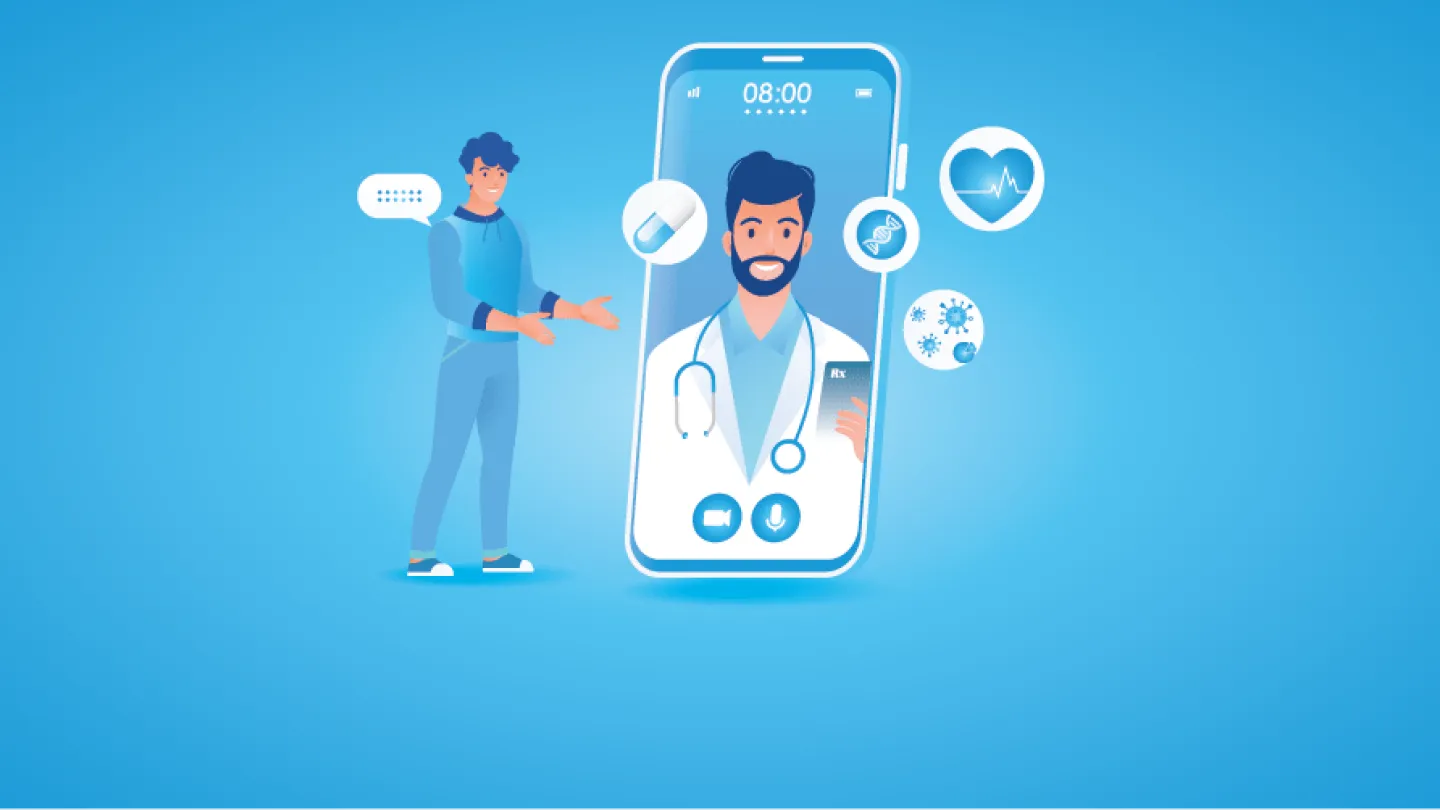WHAT IS TELEMEDICINE? WHAT ARE THE PROS AND CONS OF TELEMEDICINE
The introduction of cutting-edge technology into the ever-changing healthcare industry has fueled the growth of telemedicine. This revolutionary approach uses advanced technology solutions to expand medical services of importance to individuals in remote areas, leading to a paradigm shift in terms of the traditional delivery of healthcare. Today, we will deeply dive into the benefits, the differences between telehealth and telemedicine that set them apart, and the amazing delivery options while also discussing the potential challenges of this new approach to patient-centered healthcare delivery.
As we move towards a detailed discussion through this article, it is crystal clear that telemedicine is not just another ordinary tool but a force rapidly influencing the basics of healthcare delivery in this digital era. Through strong technological networks, clinicians can bridge geographic gaps, ensuring unlimited access to essential health care for individuals in remote areas. Below, we will introduce you to the benefits and complexities of telemedicine, with a detailed explanation of the applications and processes.
Benefits of Telemedicine
-
Convenience
If there is one quality that makes telemedicine shine in the healthcare world, it is its convenience. Individuals in need of care can access medical services from around the globe through virtual mediums. This technology eliminates the reasons to physically visit a doctor, allowing patients with mobility or location issues to receive better care from whomever they want without any hindrance.
-
Cost savings
The main advantage of telemedicine is its potential to be a cost-effective alternative to conventional in-person care. By eliminating the need for patients to travel to designated facilities and for expensive consultations with healthcare professionals, telemedicine can significantly reduce overall healthcare costs, benefiting patients and all caregivers.
-
Improved access to medical services
Telemedicine plays an important role in addressing healthcare access gaps. It extends medical care to disadvantaged or rural populations who may not have access to traditional healthcare services. In addition, it facilitates access to treatment from health care providers even in different cities or countries, breaking down geographic barriers in the process.
-
High quality of care
In addition to convenience and cost savings, telemedicine contributes to improved care through greater patient engagement. Patients have more control over their treatment and can access treatment more conveniently, improving overall health outcomes and satisfaction. Early treatment also allows for timely intervention, which improves care. All are good.
Telehealth vs Telemedicine
While these two terms are often used interchangeably, they are not synonymous.
- Let it be noted here that telehealth services encompass all types of healthcare services delivered through technology at a distance. These include virtual reality medical advice, remote follow-up of patient health data, and online health education programs. Telehealth seeks to make healthcare accessible to people of all locations and mobility.
- On the other hand, telemedicine refers to the clinical services that healthcare practitioners use technology to provide. This may include online medical expertise, diagnosis and treatment of minor conditions, and patient health information, which will be monitored remotely. Telemedicine seeks to improve the efficiency and cost-effectiveness of health care by allowing patients to receive medical care without physically visiting a nurse’s office or dispensary.
- While there is considerable overlap between telehealth and telemedicine, the key difference lies in the services provided. Telehealth solutions are an approach to comprehensive healthcare delivery that complements services other than clinical treatment, such as health education and wellness programs.
- Telemedicine, on the other hand, only applies to medical treatment through technology. Thus, whether you’re looking for treatment for a minor illness or strategies to enhance your overall health and wellness, telehealth and telemedicine can help you obtain the care you need, no matter where you are.
Ultimately, telehealth, or telemedicine, aims to make healthcare accessible, convenient, and affordable for patients.
Delivery Methods of Telehealth
A deeper dive into the varied delivery methods of telehealth illuminates the versatility of this approach:
-
Synchronous Telehealth
It refers to real-time interactions between healthcare professionals and patients. This can be done through video conferencing, phone calls, or instant messaging. Patients can receive real-time medical advice, counseling, and treatment through Synchronous Two Health, even if they are not physically present at a medical facility.
-
Asynchronous Telehealth
It involves exchanging health information without real-time interaction between health professionals and patients. It includes sending and receiving medical records, test results, images, and remote monitoring of patient health information.
-
Remote Patient Monitoring (RPM)
Remote patient monitoring (RPM) uses technology to remotely track a patient’s health status. Wearable devices, smartphone applications, or home monitoring devices that measure vital signs, activity levels, and medication adherence are a few examples of RPM applications.
Pros and Cons of Telemedicine
Micro-analysis of the benefits and challenges associated with telemedicine is necessary to achieve a balanced understanding of both. Some of the benefits and cons are listed below:
The benefits:
Convenience: Telemedicine allows for treatment while staying at home, benefiting individuals who have difficulty moving or live in remote locations.
Cost savings: Eliminating the cost of transportation and managing physical facilities makes telemedicine a potentially more cost-effective alternative to care.
Improved Access: Telemedicine extends medical care to disadvantaged or rural populations, providing access to health care that might otherwise be limited.
Increased Patient Engagement: By giving patients more control over their treatment, telemedicine encourages active patient engagement, improving health outcomes and satisfaction.
Faster treatment: Access to treatment is accelerated through telehealth applications, resulting in faster interventions compared to traditional in-person care.
Challenges:
Limited physical examination: A detailed remote physical examination of the patient remains an important limitation in telemedicine.
Technical Issues: Common technologies in telemedicine present challenges such as slow internet connections or software bugs, which can cause service delays or interruptions.
Limited resources: Telemedicine may only cover some health services, especially those requiring individualized care or specific diagnostic procedures.
Privacy Concerns: Electronic communications in telemedicine raise privacy and security concerns, including the possibility of cyber-attacks and breaches of sensitive patient information.
Limited patient comfort: Some patients may feel uncomfortable sharing medical information via video or teleconferencing, which can affect the quality of care.
Despite these challenges, telemedicine’s robust capabilities ensure continued progress and that current barriers can be overcome. For example, advances in remote monitoring systems will lead to more sophisticated and accurate physical examinations, improving telemedicine’s overall effectiveness.
Conclusion
This article has thoroughly explained the unique nature of telemedicine, focusing on the pros, complications, and differences between telemedicine and telehealth. Eliminating all restrictions, telemedicine is an effective route to providing healthcare in times of need without any barriers.
An outstanding telehealth solution contributing to this area is Care Cloud Live. This scalable and comprehensive telehealth system ensures secure communication between patients and healthcare professionals who want a superior telehealth experience – It reveals the future of delivery. As telemedicine and digital health technologies reshape nursing, patients now have unprecedented access to their health information, making telemedicine more accessible and accessible than ever before.

Download your free copy of:



